I tested the first next-gen RGB mini-LED, and while it's a stunning TV, OLED doesn't need to be worried just yet
New mini-LED technology in a cinema-sized screen
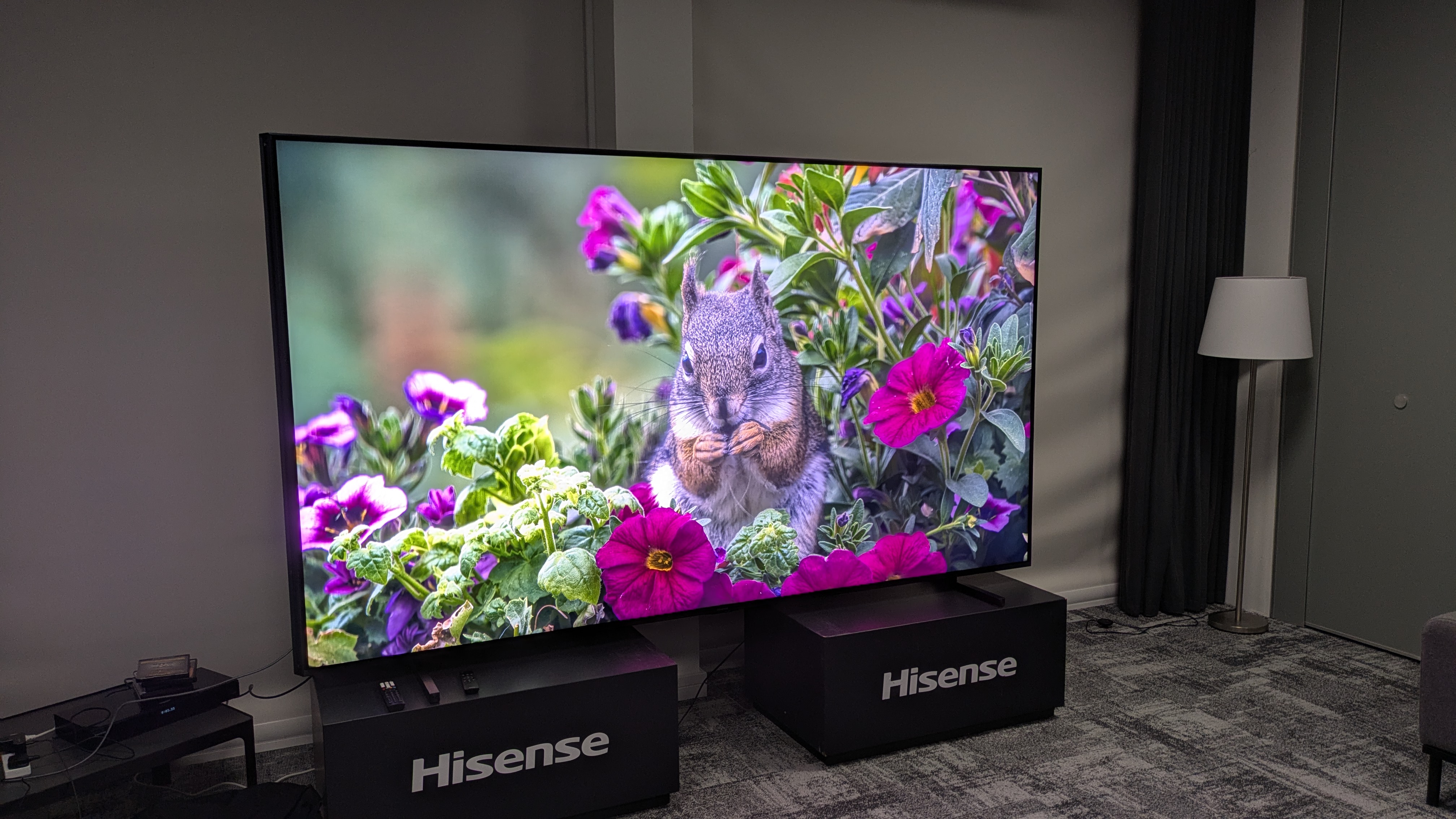
When Hisense announced its 116-inch RGB mini-LED TV at CES 2025, the TV world took notice.
RGB panel technology had already been realized in LG’s new Primary Tandem RGB OLED panel, with the promise of bolder, richer colors than had previously been seen in a TV. But combining that with a super-bright mini-LED backlight in a cinema-sized screen was an equally exciting prospect.
Hisense makes some of the best TVs, with the new Hisense U8QG scoring highly in our Hisense U8QG review and finding its place on several of our best-of lists. But the new 116UX is mini-LED TV tech taken to the next level.
I got the chance to test the Hisense 110UXN in December 2024, and it earned four out of 5 stars in my Hisense 110UXN review. Its color and brightness were two highlights, but the $15,000 / £20,000 price was tough to overlook, especially given the TV’s backlight blooming and screen uniformity issues.
The major difference between the Hisense 110UX and the 116UX is the latter’s RGB mini-LED backlight (the 110UX uses a standard mini-LED backlight). My colleague Matthew Murray, Head of Testing for Future, did his own hands-on test of the 116UX. But I got to spend more time with it doing real-world testing.
A new world of color and detail
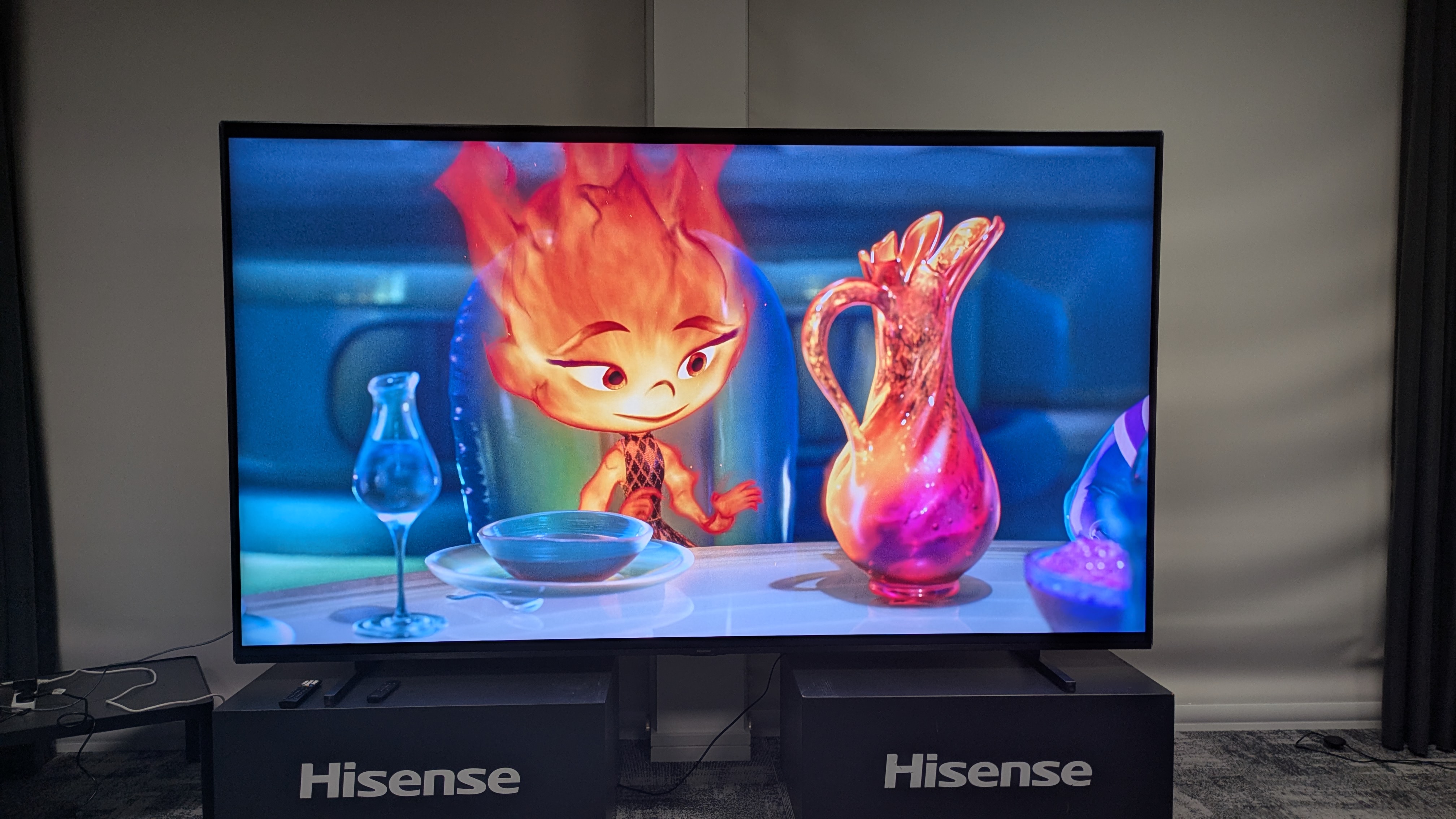
From the minute I streamed Elemental, one of my movie choices for testing color, on Disney+, it was clear that the TV’s RGB LEDs (all 20,000 of them) added another layer to the experience. Even with the TV in Dolby Vision Dark mode, colors looked spectacular. The oranges, reds and purples of Ember’s flames and the glass vase were displayed with a real vibrancy. Switching to Dolby Vision IQ made colors look even brighter and bolder, but I preferred the more natural picture with Dolby Vision Dark.
I next moved to Wicked on 4K Blu-ray, again in Dolby Vision Dark mode. As Elphaba stood under a tree with pink flowers, the flowers looked rich and bright, with bold highlights, and Elphaba’s green skin was vivid. This was hardly surprising since in our measurements, we found that the 116UX covered a staggering 99.4% of the UHDA-P3 color gamut, matching the color performance even of the best OLED TVs of this year, such as the LG G5 and Samsung S95F.
Sign up for breaking news, reviews, opinion, top tech deals, and more.
Watching demo footage on the Spears & Munsil UHD Benchmark 4K Blu-ray in HDR10 format, a field of red flowers had an eye-popping punch and plenty of depth. A parrot’s yellow and blue feathers shimmered, looking vibrant and colorful.
This footage uses the BT.2020 color space, and when we measured the 116UX, its BT.2020 color gamut coverage was 92.64% – a phenomenal result and the highest we’ve ever recorded for a TV. Once again, it’s no wonder the 116UX’s color looks so good.
Throughout my testing, I also noticed that textures and details were incredibly realistic, which gave people, objects, and landscapes depth, clarity and a real lifelike presence. Close-up shots of faces, such as those in The Batman and No Time to Die, revealed every pore, hair, and scar with a staggering level of detail. Even the 116UX’s upscaling was impressive, with the textures in an HD stream of Fight Club on Disney+ getting a real uplift.
Room for improvement
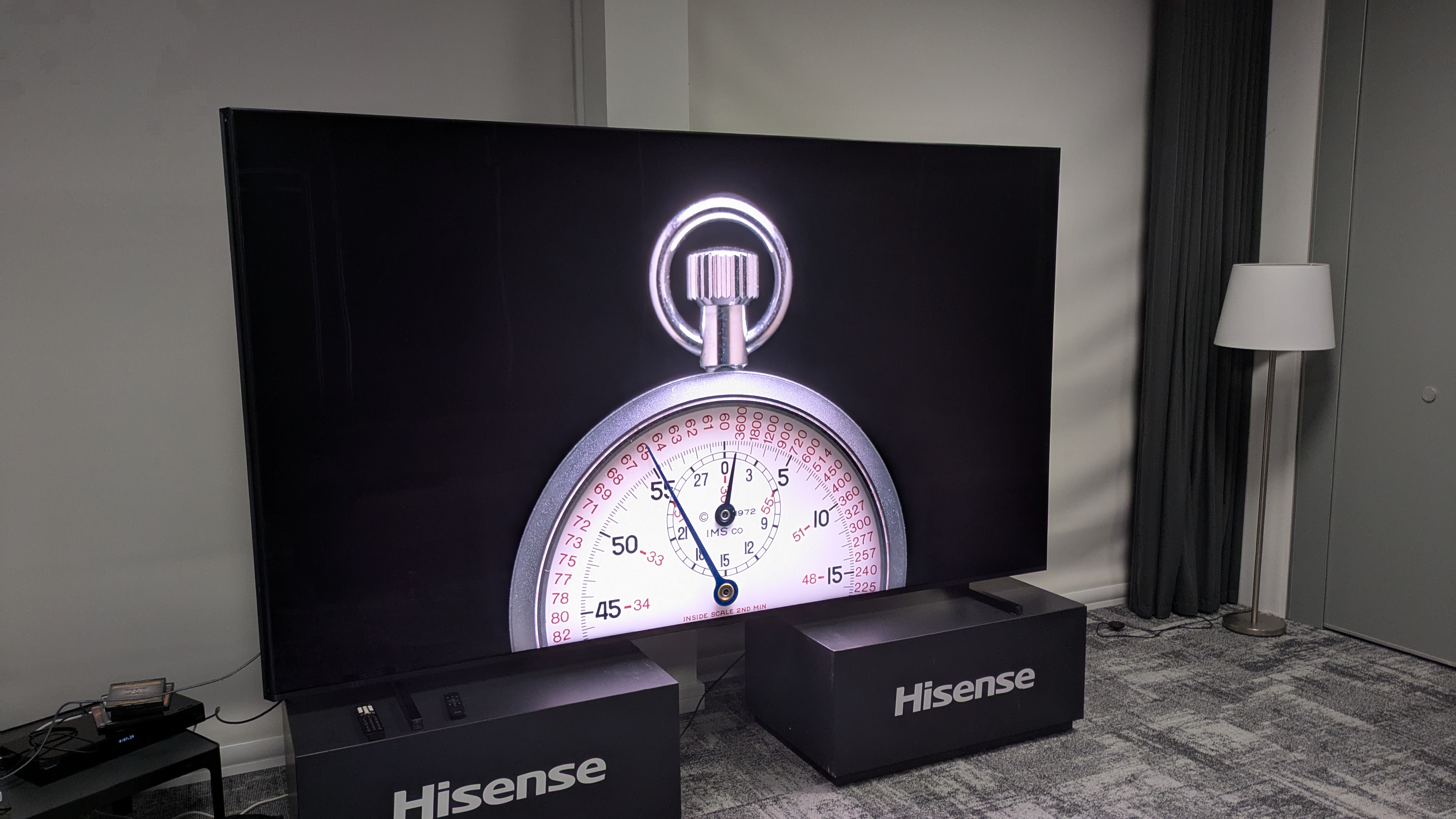
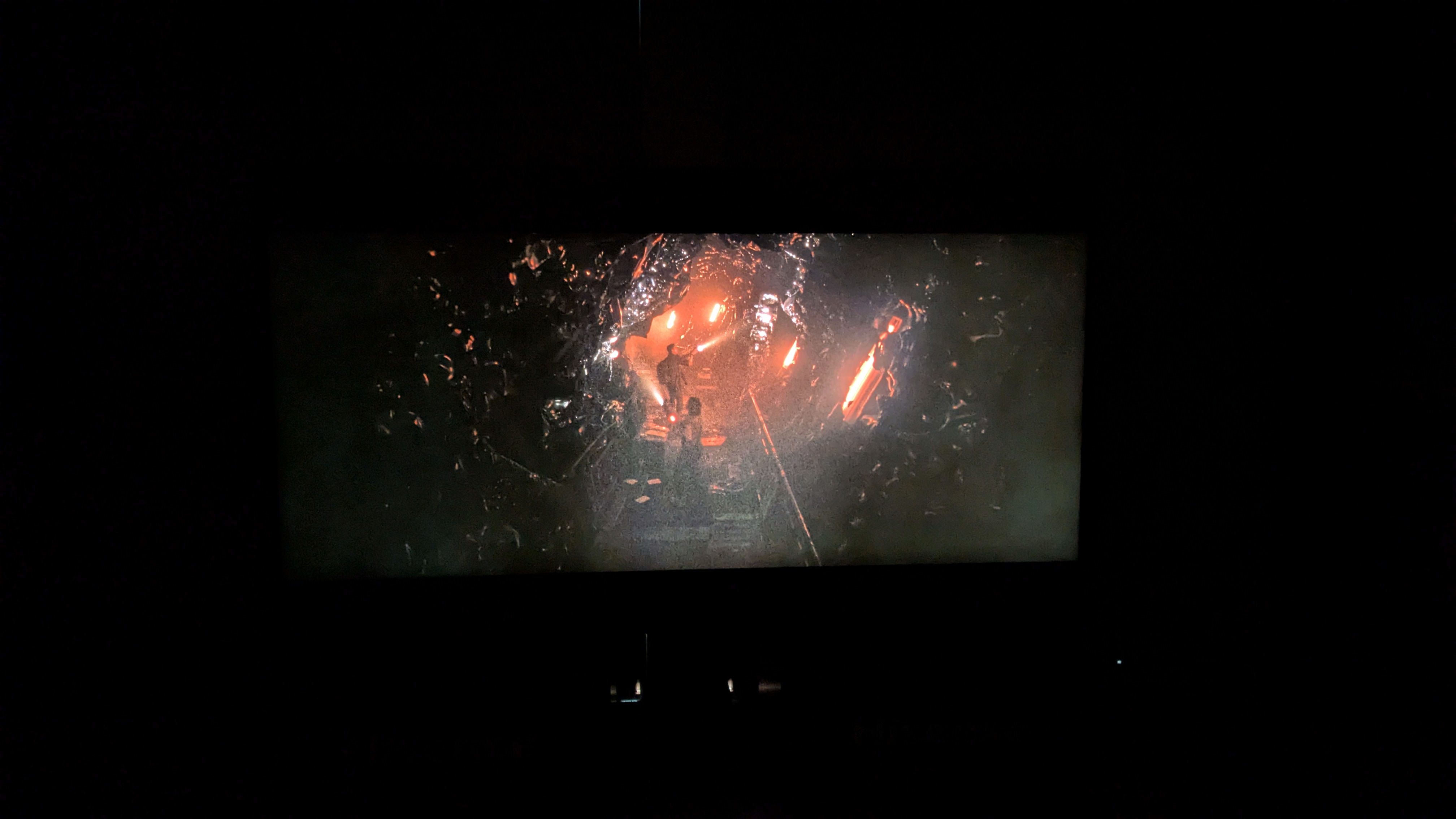
The 116UX had seriously impressed me with its color and detail, but it was now time to move on to darker movie scenes, something mini-LED TVs can struggle with. Watching the same Spears & Munsil demo footage, but focusing on studio sequences with objects against dark black backgrounds and night scenes, the 116UX displayed deep, rich blacks. They did look slightly raised in places, but they were still impressive for a mini-LED TV, especially one this bright. I did see some blooming around bright objects, which was more apparent when viewing from an off-center position, but the TV’s performance here was pretty good overall.
So all good news, right? Not quite. Watching other dark scenes in Dolby Vision Dark mode revealed some screen uniformity issues with the massive 116UX. In Alien: Romulus, a scene with an alien nest in a tunnel showed significantly raised black levels along with a clouding effect.
The same was true for The Batman. In the opening crime scene sequence, black levels looked raised, and there was the same blooming around characters and bright objects. Also, the clouding effect I saw in Alien: Romulus could be seen here.
Admittedly, The Batman is an extremely challenging movie for TVs due to its low mastered brightness (400 nits compared to the standard 1,000 nits). And the clouding effect wasn’t as bad with Alien: Romulus, but it was still present. For a TV at this price, I’d expected it to do a better job. The 116UX won’t be beating the best OLED TVs any time soon.
A big price to pay
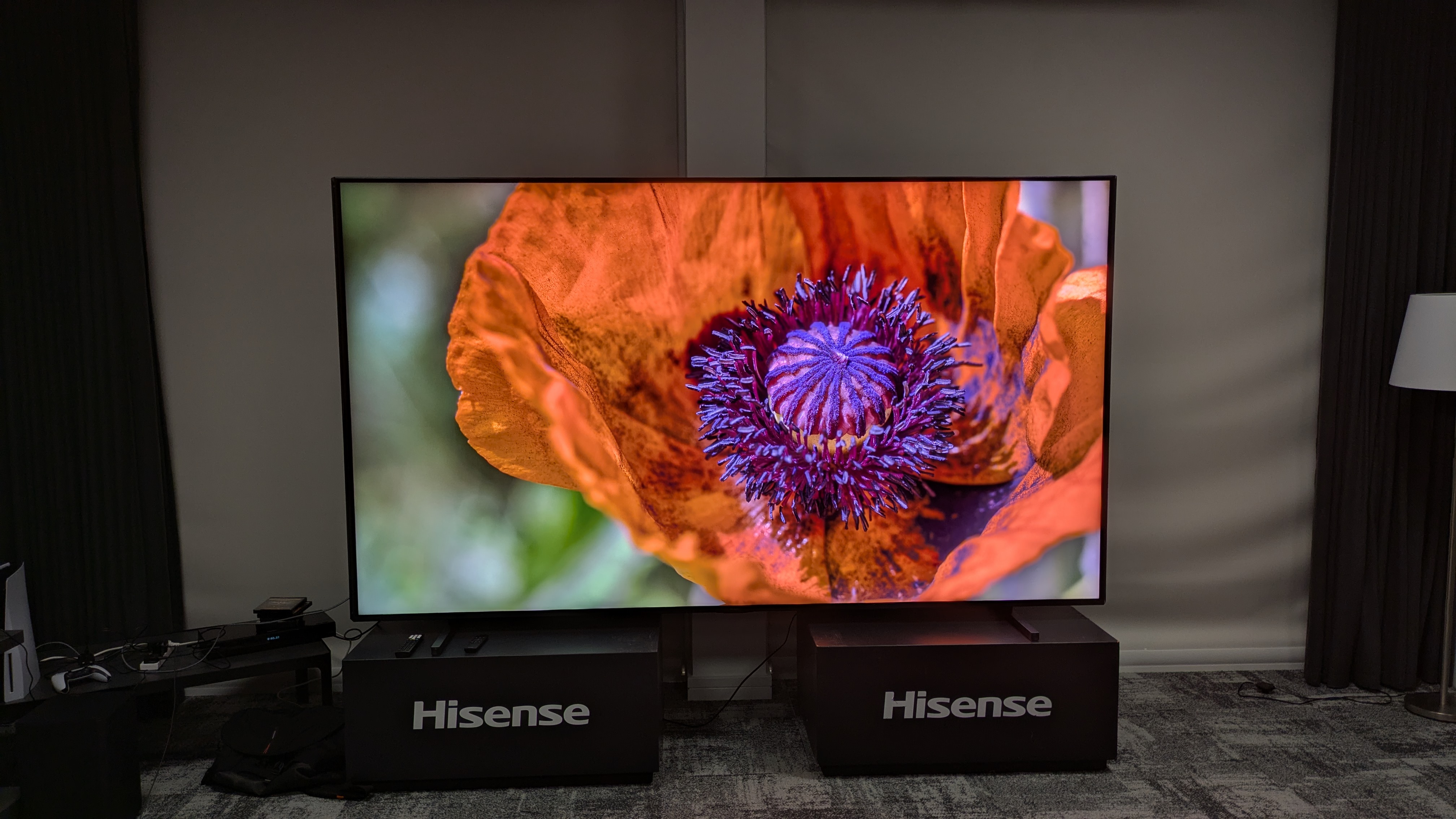
The Hisense 116UX is set to launch in September for $24,999 / AU$39,999 / €28,999 (roughly £25,000 based on the European price). That price is going to outstretch almost everyone’s budget.
I also found during my testing that while its built-in sound system is impressive, with plenty of bass rumble, the sound felt constrained to the screen. A screen like this deserves sound to match, so you’ll need to take the price of one of the best soundbars into account, too.
While you can’t get an OLED TV at this size, you can buy a 97-inch LG G4 or LG G5 OLED for roughly the same price at $24,999 / £24,999. You can also get a top-end 4K projector, such as the JVC DLA-NZ800, with a decent screen and sound system to match for a similar price. When you consider that, the 116UX suddenly looks a little pricey.
The 116UX isn’t a perfect TV, but it is an impressive step forward for mini-LED tech. Despite its shortcomings, its color, brightness and upscaling are all superb. With improved local dimming and a more reasonable price tag, RGB mini-LED could become a real threat to OLED TVs.
You might also like

James is the TV Hardware Staff Writer at TechRadar. Before joining the team, he worked at a major UK based AV retailer selling TV and audio equipment, where he was either telling customers the difference between OLED and QLED or being wowed by watching a PS5 run on the LG 65G2. When not writing about the latest TV tech, James can be found gaming, reading, watching rugby or coming up with another idea for a novel.
You must confirm your public display name before commenting
Please logout and then login again, you will then be prompted to enter your display name.